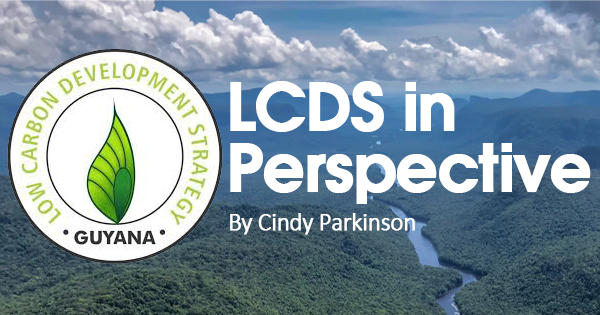By Cindy Parkinson
THE President of Guyana, Dr. Mohamed Irfaan Ali, affirmed, at the International Energy Conference in Georgetown, that the Low Carbon Development Strategy (LCDS) is fundamental to the country’s sustainable development. He stated, in his opening remarks that the LCDS combines economic growth with community empowerment efforts.
According to President Ali, “The LCDS is not just an innovative idea; the LCDS is a demonstration of a practical strategy, and Guyana’s position is to make the LCDS a global model for sustainable development.” Guyana is taking a number of steps with this approach that will help the nation advance low carbon development in all spheres of society.
Guyana is working on an innovative project, a forest carbon programme that allows other nations or businesses to pay for the forest carbon service provided by its expansive forests to the world.
With this, the nation is compensated for maintaining its pristine forests and contributing directly to the global climate ambition and targets set.
One of the joint venture partners in the oil-producing Stabroek Block off the coast of Guyana, Hess Corporation, has already committed to paying Guyana US$750 million for preserving the rainforest through a unique carbon credit programme. Additionally, the indigenous villages all across Guyana will receive 15 percent annually, of the proceeds from the carbon credit programme. This programme is already in implementation.
Additionally, Guyana intends to use the money from its new oil fortune to finance both its development and its switch to cleaner energy sources through its development strategy.
President Ali noted: “What we have said is that oil and gas are not the answer. It will give us much-needed revenue to catalyse the other sectors.”
The President also stated that although Guyana has shown worldwide leadership in the sustainable development of natural resources for over ten years, the country will continue to use its resources in ways that would advance low carbon development in Guyana. He pledged that Guyana’s development strategy would serve as a prototype for sustainable development around the world.
To help developing countries deal with the triple challenges of climate change, food security, and energy security, he expressed that a “new world coalition” was necessary.
President Ali stated that Guyana is aiming to prove to the world how it can balance profitable oil and gas production with its long-standing environmental commitment.
The Head of State also pointed out that Guyana is aware of the challenges ahead and the resources required to overcome them.
Amerindian settlements will benefit from every aspect of the LCDS 2030, including from the remaining 85% and additional to the 15 percent direct allocation to villages. A few of these initiatives are already in progress in solar power, hinterland infrastructure, and education and health services to villages.
The government said that it would fund income-generating activities, food security-improving village-level programmes, and community-level low-carbon efforts.
In order to guide activities in the forest sector that reduce emissions from deforestation and forest degradation, as well as the sustainable management of forests and the conservation and enhancement of forest carbon stocks in developing countries, the Conference of the Parties (COP) of the United Nations Framework Convention on Climate Change (UNFCCC) developed the framework known as REDD+. The Architecture for REDD+ Transactions Environmental Excellence Benchmark (ART-TREES), which Guyana is participating in, is a recognised certification and accreditation framework for carbon credits.
Norway has given Guyana GUY $46.2 billion, or roughly US$220 million, in results-based payments under the LCDS’s initial phase since 2009.
These funds have been utilised in part to progress the land titling programme for all outstanding title requests, improve the nation’s low-carbon infrastructure, finance renewable energy sources, prevent flooding, and create green jobs. The Amerindian Land Titling (ALT) programme has awarded absolute grants to about 13 villages, with Region Nine’s Yupukari being the most recent beneficiary. In June 2022, the village’s land area was increased by 145 square miles, double its prior size. 21 villages were designated, and 19 of those acquired certificates of title, the final step in the titling process.
In addition to expanding low-carbon development throughout all communities in Guyana, LCDS 2030 carries on the work begun in each of these areas.
(This is part of a weekly series on LCDS.) The author can be contacted at [email protected].)



